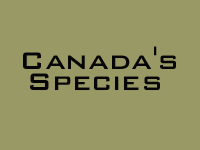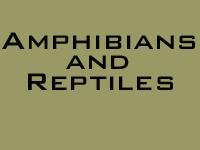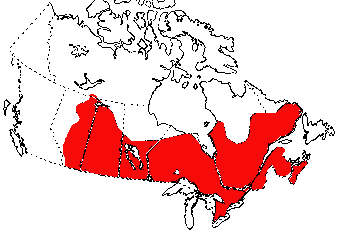
 |
 |
American Toad
Bufo americanus

American Toad. Photo:David Green
Like all true toads, this species is much better adapted to a terrestrial lifestyle than are frogs in general. Its heavyset body with short legs and thick skin help minimize water loss, and it has a large bladder from which it can reabsorb water during dry periods. Two spiky growths can be seen on the bottom of each hind foot which serve to burrow into loose soil, providing concealment. Despite these many terrestrial adaptations, toads, like all amphibians, need water to reproduce. During rainy periods, they tend to congregate around temporary ponds, ditches, lake shallows, or other slow flowing waters to breed. Toads will eat pretty much any invertebrate that is most abundant in the area at a particular time. They use the same strategy for prey capture as do most frogs: they strike with their sticky tongue, sometimes faster than the human eye can see, and draw the prey back into the mouth which can sometimes be swallowed only with the help of the toad's eyes. These are designed to be drawn down into the mouth/throat cavity to help push food down. The "warts" of toads are actually glands, some of which produce extremely toxic substances. One should not handle any kind of toad without washing hands afterwards, as some of the toxins can be absorbed through cuts and mucous membranes and cause numbness.

![]() Distribution
of American Toad in Canada
Distribution
of American Toad in Canada
